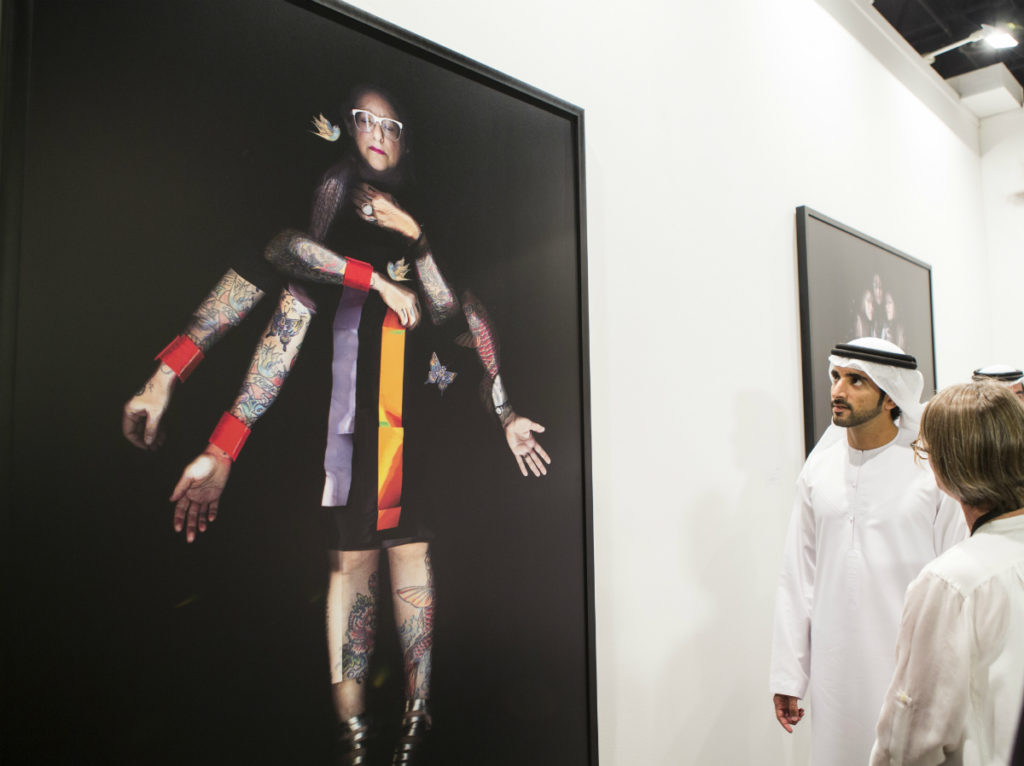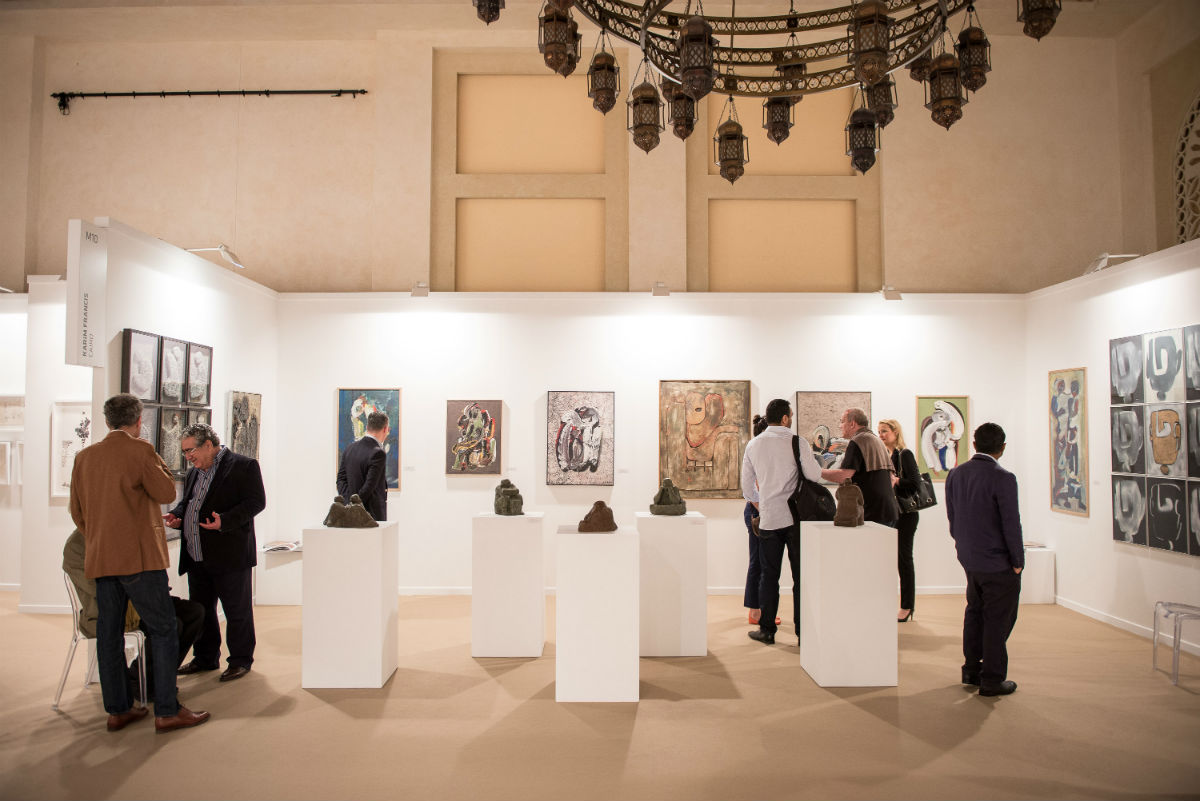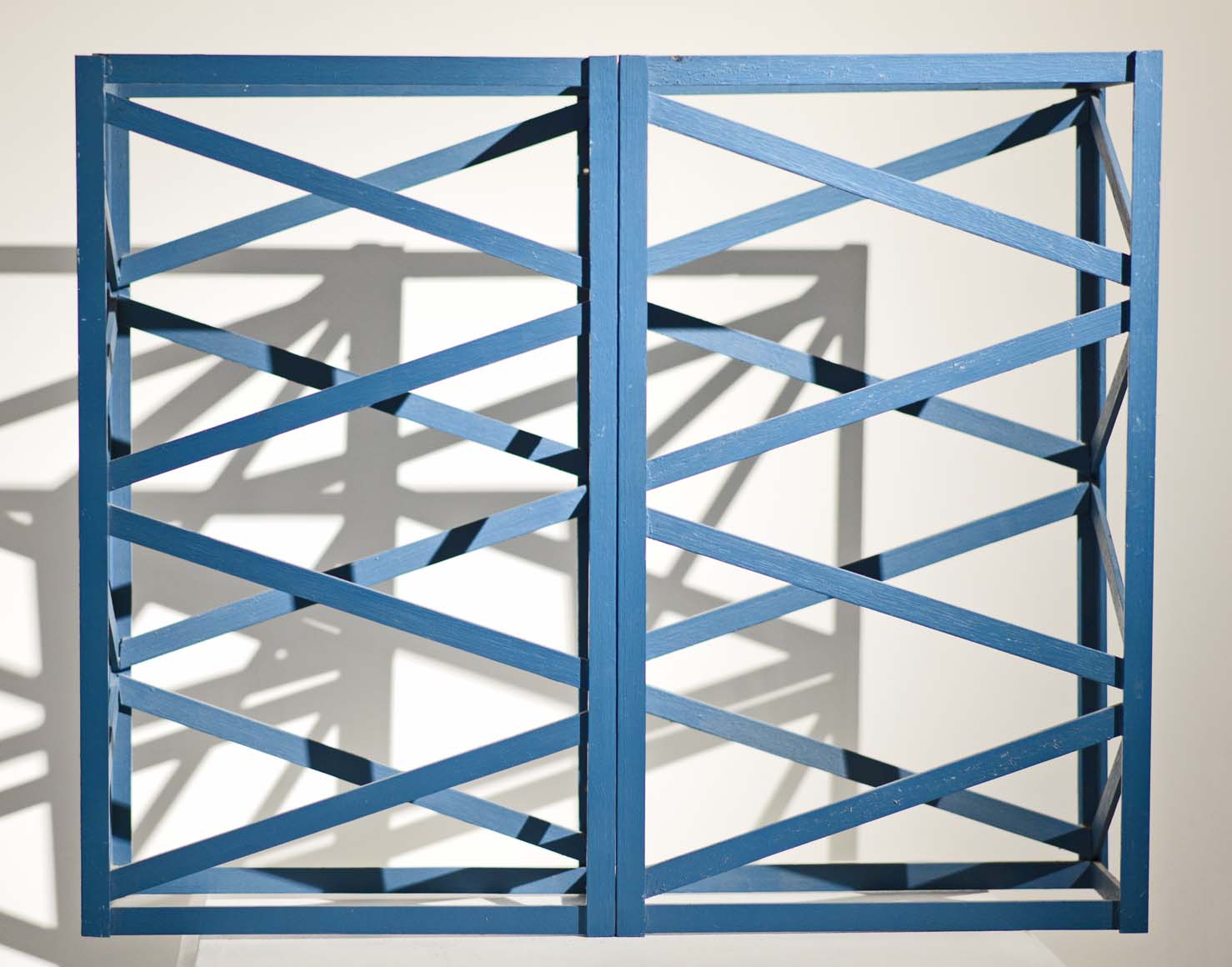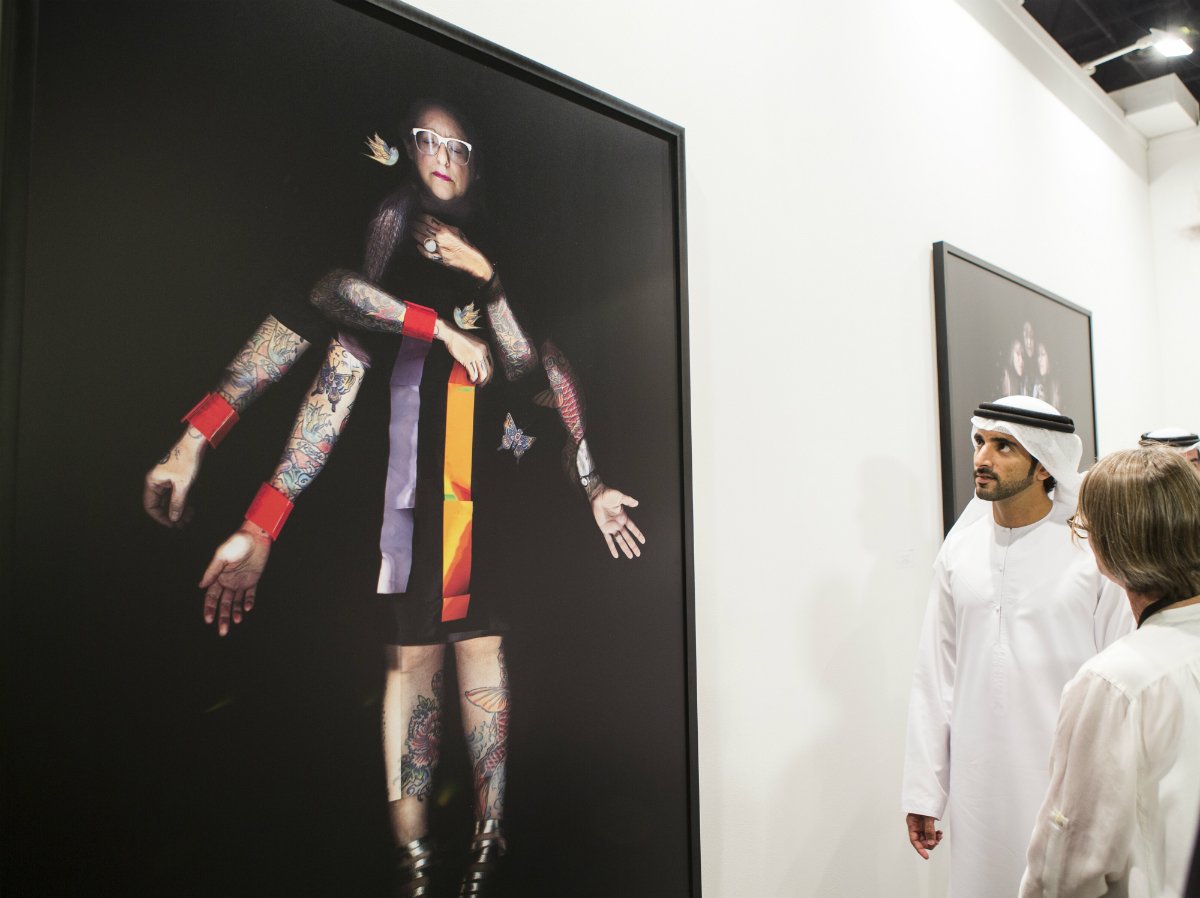Art Fairs
Art Dubai Opens With Steady Sales, Mostly Under $100,000
Bling or bust is the stereotype, but this fair packs a heady vibe and sales to boot.

Bling or bust is the stereotype, but this fair packs a heady vibe and sales to boot.

Coline Milliard


Art Dubai 2014, Art Dubai modern preview
Karim Francis, Cairo
Courtesy Art Dubai.
“The thing about Art Dubai is that you see stuff that you wouldn’t see anywhere else,” says regular visitor Younes Bouadi. He is right. While many art fairs offer experiences so similar that they all seem to blend into one, Art Dubai has developed a strong identity: it’s anchored in the UAE and the region at large and embraces the international. No small feat.
The great and the good of the art world came in droves to the VIP opening yesterday. Collectors such as London’s Fatima and Eskander Maleki, Libyan princess Alia Al Senussi, and Saudi Abdullah Al-Turki were all spotted strolling the aisles.
The third of the 500 artists shown this year are from the region, which makes the fair a platform unlike any other. An eminent Parisian collector at Art Dubai for the first time told artnet News she saw artworks of a “quality and creativity” she hadn’t seen at FIAC and Art Basel for a long time.
Beside the patronage of Dubai ruler HH Sheikh Mohammed bin Rashid Al Maktoum, Art Dubai benefits greatly from being a rather modest affair: only 85 galleries are exhibiting (a fraction of the number at Frieze or the Armory Show). The art on show totals an estimated US$40–45 million. Despite the ubiquitous displays of wealth synonymous with Dubai, the price point remains fairly low: the large majority of the sales yesterday were under US$100,000.
New this year is the modern section dedicated to art from the Arab world, India, and Pakistan. It is very much in keeping with the zeitgeist. Older artists are being “rediscovered” like never before. The inauguration of Frieze Masters in London in 2012 crystallized the contemporary art world’s growing interest in art from the past. But Art Dubai Modern is no Frieze Masters. It focuses on the 20th century and, with only 11 exhibitors, is really a bijou exhibition that reinforces the fair’s reputation as a place for discovery.
Dealer Karim Francis, from Cairo, has until now refused to take part in any art fairs, which he describes as “supermarkets,” but he went for Art Dubai Modern. His booth features a series of paintings by the Egyptian painter Hamed Abdalla. A successful artist in Egypt and France, Abdalla withdrew (and was pushed out) from the art world for the last 30 years of his life. Abdalla’s pictures, adroitly combining calligraphy, figuration, and abstraction, are on offer for between €20,000 and 30,000 (US$27,800–41,700).
Diamonds, couture dresses, and champagne did come out in the evening, but in the afternoon the atmosphere was one of quiet concentration. And sales got off to a quick start. London’s Grovesnor Gallery sold Winter Blue (1968), a minimal sculpture by Rasheed Araeen for around US$60,0000—a success, particularly considering that it was the only piece on show. When artnet News visited, all the other works destined to the booth were still being held in customs. Beirut’s Agial Art Gallery sold a 1952 bronze sculpture by Michel Basbous for between US$20,000-30,000, and the Tunisian Galerie El-Marsa sold five pictures by Algerian painter Baya to collectors from the US and the UAE.

Rasheed Araeen, Winter Blue (1968).
Photo: Courtesy of Grosvenor Gallery
Dubai’s gallery Lawrie Shabibi is showcasing early paintings and drawings by Nabil Nahas, a New York–based Lebanese artist they represent, and who has been “recently re-appropriated by the Arab world,” says William Lawrie.“It’s only in the last eight years or so that the market here has really been on the up,” the dealer answers when asked how he explains this phenomenon. “Eight years ago, it was a completely different scene: there was no Art Dubai, there were no Christie’s or Sotheby’s auctions, and there were hardly any galleries here. And also museum curators weren’t really that interested.”
How things have changed. Today Art Dubai welcomes an astounding number of museums. During the press conference, fair director Antonia Carver put the number at 70 museum groups and more than 400 institutional representatives. Director of the Gugggenheim New York Richard Armstrong, Iwona Blazwick from the Whitechapel Gallery in London, and the New Museum’s Massimiliano Gioni all made the trip. For dealers, this alone can justify the expense. At Lawrie Shabibi, two works on paper by Nahas found a new home yesterday—one in a London-based institution.
In the contemporary section, Dubai’s Third Line reported strong sales, including a black-and-white picture made with beads embroidered on canvas, The Great Escape (2014) by Iranian artist Farhad Moshiri. It went to a European collector for US$200,000 and was Art Dubai’s most expensive sale at time of writing.
The Third Line display demonstrates “a new thematic direction for the artist,” self-confessed Moshiri admirer, patron, and co-chair of Tate’s Middle Eastern acquisition committee Maryam Eisler told artnet News. She praises Art Dubai as the “best organized fair in the Middle East, with a footprint extending north to Iran, east to the Indian subcontinent, south to the Arabian Peninsula, and west across North Africa.”
London’s Pilar Corrias, an Art Dubai regular, was all smiles, having sold a new painting, Ink Splatter (2013), by the rising star Tala Madani for US$80,000 to a known collector from Europe.
It is worth noting that exhibitors here have learned to exert a certain self-censorship. A Third Line gallery representative showed artnet News images of a nude painting by the Iraqi-born, US–based artist Hayv Kahraman, which is to be presented during the second half of the fair. But the representative quickly added: “There are things that one doesn’t take to Art Dubai.” The London-based gallery Paradise Row was informed by the fair that there were complaints after staff mass-mailed out an image of Mounir Fatmi’s sculpture I Want to Understand (2013), which features a Qur’an. It was nonetheless proudly displayed at the booth (and comes with a €15,000/US$20,886 price tag).

HH Sheikh Hamdan Bin Mohammed Bin Rashid Al Maktoum
Courtesy Art Dubai.
“The energy is incredible,” said Yasmin Atassi, director of Dubai’s Green Art Gallery. Two works by the Iran-born, Brooklyn-based artist Kamrooz Aram—a winner of this year’s Abraaj Group Art Prize, awarded this year to five artists at the fair—were snapped up in the first few hours by an American and an Iranian collector. Among the local buyers, Iranian collectors are particularly influential in Dubai. They often meet artists from their home country at the fair, “which has become a stepping stone for many Iranian artists,” says curator, art adviser and Iranian art specialist Nina Moaddel.
Another Abraaj Group prizewinner, the Moroccan-born, Berlin-based Bouchra Khalili also fared well. Two of her photographs from the Lost Boats series sold at the booth of her Paris dealer Galerie Polaris for US$7,650 and $6,250 respectively. A first-timer at Art Dubai, gallery director Bernard Utudjian confides being pleasantly surprised. “All my prejudices have been blown away,” he says, before adding he rarely experiences conversation of this quality at other fairs.
Heavy-hitters such as Galleria Continua, which has outposts in San Gimignano, Beijing, and Le Moulin Ste Marie, reported several sales, including works by Michelangelo Pistoletto and Mona Hatoum. Paris’s Galerie Nathalie Obadia sold a sculpture by Portuguese Joana Vasconcelos, Candy Garden (2013) for around €70,000 (US$97,450).
But the majority of sales were of work by emerging, more affordable artists: the young Chicago painter Sam Moyer attracted much attention at the booth of the Belgian Galerie Rodolphe Janssen, with Untitled, 2014 selling for €12,000 (US$16,706). Paradise Row noted much enthusiasm for the works of the Royal College of Art graduate Majed Aslam. Two of his painterly erased printouts, priced at £2,500 (US$4,150) each, sold during the opening.
The London and Paris-based dealer Selma Feriani was delighted to report the sales of two pieces by the Lebanese Pascal Hachem (US$4,000-6,000 range). “People here are quick to buy and they like the concept,” she said, rebutting the much-bandied about idea that buyers in emerging markets such as the Gulf tend to go for bling. “They like a message, and love hearing the story behind the work.”